Meet the women pushing for diversity in London’s graffiti scene
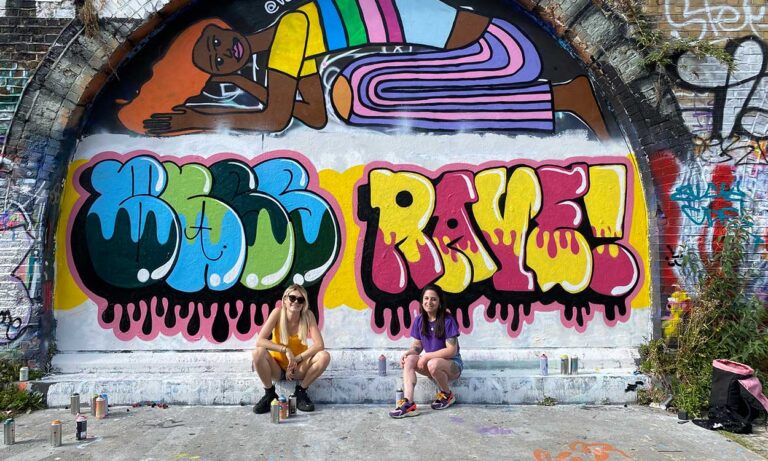
Humans have been writing on walls since the dawn of time. Graffiti—a stripped-back, DIY form of street art that decorates our cities and brings colour to the otherwise monotonous, monochromatic urban sprawl—is the modern-day reincarnation of this ancient act. From overhead train lines to high-street shutters, this form of art is often vilified as vandalism, despite the rich and complex subculture that surrounds it.
Graffiti is a powerful form of self-expression, a creative outlet and a means to challenge social norms. And yet, despite this, the subculture and community that surrounds it are often male-dominated. But why is that? SCREENSHOT spoke with two London-based women graffiti writers about their experience in the scene, what draws them to graffiti, and how we can encourage more women to pick up the spray can.
“I needed a release: some kind of kick, an act of rebellion,” writer and music journalist, Verity Raphael, told SCREENSHOT, recalling the first moment she found graffiti and the community that surrounds the subculture. “I was invited to be a lookout one day during lockdown while a group of six boys did an operation in Soho, London. They all had scooters, balaclavas and timed it perfectly.”
“It was so exciting, especially in the middle of lockdown, I hadn’t felt anything like that in a while,” she continued. “That’s what first inspired me to start sketching in my notebook.”
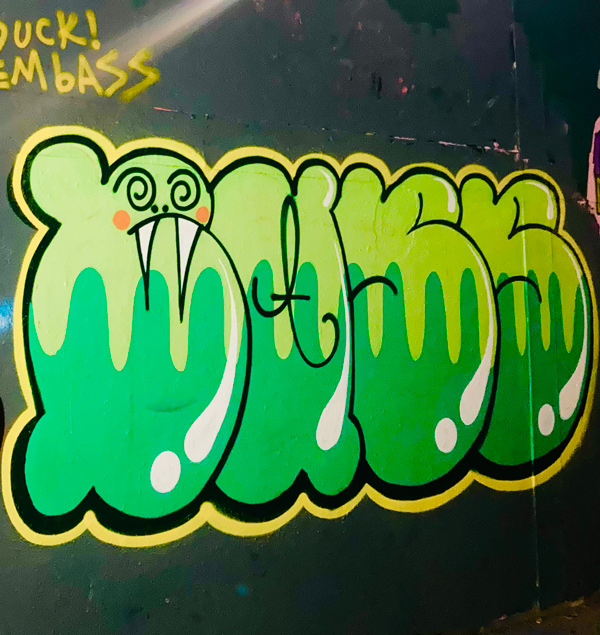
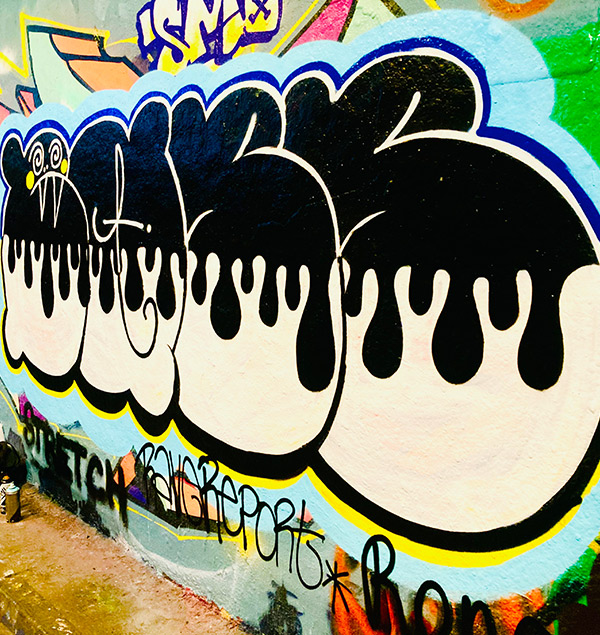
London-based artist and photographer, Rahael Ross, on the other hand, notes that there “wasn’t a particular moment” where she found graffiti and the underground subculture surrounding it. Instead, she was gradually exposed to the art form through squat parties as a teenager and exploring derelict, post-industrial areas of the capital.
“I also used to walk around Hackney Wick—when it wasn’t as gentrified as it is now, it was just old warehouses and car MOT centres—and it was covered in graffiti,” Ross told SCREENSHOT. “I’ve always loved art too, but I never put the two together until Verity [Raphael] suggested I should do graffiti as well. Once I started it, I asked myself: ‘Why haven’t I been doing this the whole time?’ To me, it just feels really natural, and it’s really fun as well.”
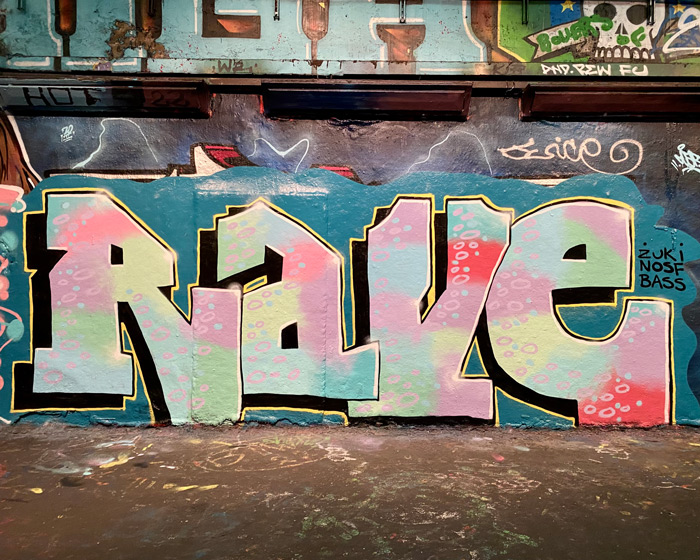
A complex and multifaceted art form
Like every form of art, graffiti is transient: moulded by its environment, geography and culture of where it’s written. While any graffiti writer is free to create whatever they please, they often develop a style that is drawn from influences: whether that be where they’re from, where they’ve been or the type of message they’re trying to send.
This is a multifaceted and criminally overlooked subculture: from the classic bubble lettering, which has links to areas like The Bronx, to the angular and brutalist style of Pixação (or Pichação), a distinctive Brazilian form of street writing derived from heavy metal album covers, often cryptic and rooted in political protest.
“The Brazil scene has really inspired me,” Raphael adds, who took a trip there with Rahael in 2016, immersing themselves in the vibrant Brazilian graffiti culture. “I’m really inspired by the women writers, like Rxis and Baby Babi. They’re not trying to hide their femininity, they embrace it. Whereas, in London, some women writers try to be masculine in their style, which is fine, but for me, I’ve been inspired by graffiti writers who embrace their feminine side, and those writers, in particular, do it beautifully.”
View this post on Instagram
“Personally I’m a bubble-style girl. I’ve always loved it,” Raphael continues, admitting that her style goes against the grain of the often more angular graffiti seen in London. “I don’t think I have a particular style,” Ross shared. “But I definitely think it’s more angular than Verity [Raphael]’s. I try and change my letters up. I tend not to stick to the same thing as I find it gets boring. I often find myself incorporating other pieces of work into my own little bits.”
“All of graffiti is a reference to each other. It’s definitely okay to take influence from different styles,” Raphael agreed. “The beauty of it is, to start graffiti, you literally just need a pen—it doesn’t even have to be a fancy pen,” she continues, recalling the “learning curve” she experienced when starting her journey in graffiti just a few years ago.
“Then, once you’re ready to work up to a spray can, find a legal wall. Or don’t if you want to do it illegally, which I don’t personally encourage,” she added. “I’ve had a lot of friends being put in prison, taken to court and stuff, I’m not about that life personally but, obviously, I respect the real [illegal] graffiti culture.”
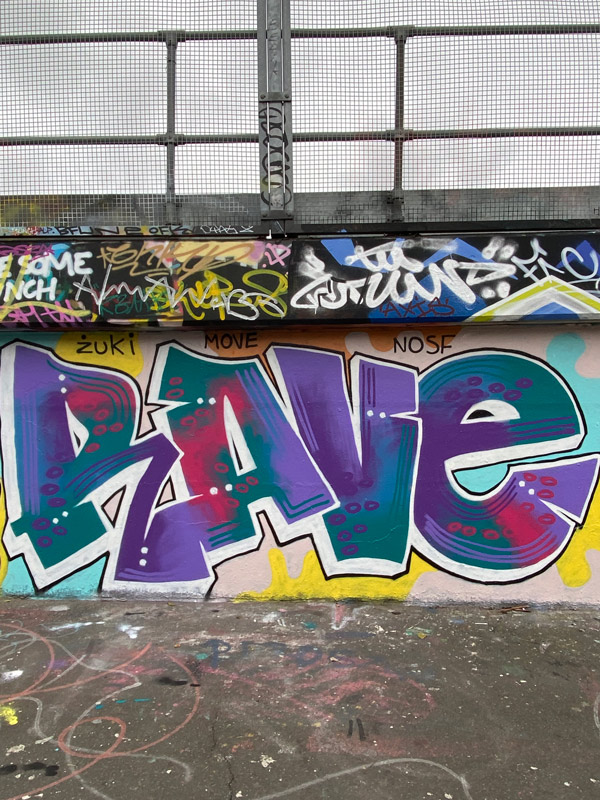
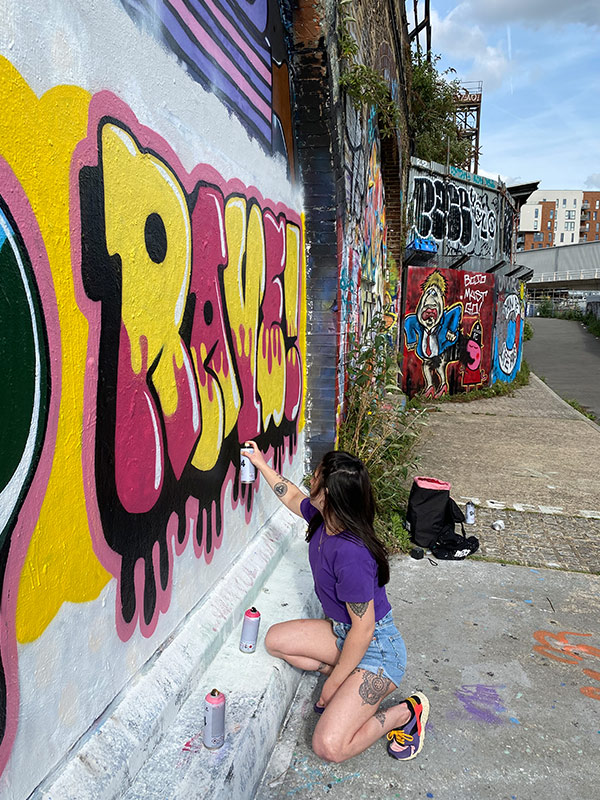
Pushing for diversity in the graffiti scene
Although the act of graffiti is accessible at its core, the subculture and community surrounding it remains very masculine. And while there is a strong network of women flying the flag for diversity, both Raphael and Ross note there is still work to be done to increase the representation of women and marginalised genders in the scene.
“Looking back, I started my graffiti journey in a very masculine way, helping an operation that was made up completely of men,” Raphael admits, recalling how although the traditional scene in London has a lot of “toxic masculine traits,” there were also men who supported her when she was a toy—a term used to describe a beginner graffiti writer.
View this post on Instagram
“When I was just starting out, I had some great mentors like Cemer, Kaps, Bloke, Ingo, Ink, Skool, and Zonk who encouraged me, which was so important and powerful. I’m grateful for them, even if my path now has been encouraging other women and bringing them into the scene,” Raphael added.
More recently, Raphael has shifted her energy away from the masculine scene, preferring to paint with women who have never picked up a spray can before. “That’s been a beautiful experience,” she describes. “It’s almost like a whole new philosophy to the traditional [and more masculine] version of graffiti. I find it a completely different experience, different energy—it’s all about encouragement, and helping each other a bit more.”
Raphael likens the often hyper-masculine subculture of graffiti to a “competitive sport” where rivalries and beef are rife. And it’s true. Spend a week observing the ever-changing shutters on the streets of London and you’ll see just how ephemeral this form of art, and the subculture around it, is.
“It can get really aggressive, with people painting over each other all the time,” Raphael remarks. “You notice people often write nasty stuff too. This isn’t everyone [in the community] of course, but I think graffiti traditionally does attract people who have suffered from difficult pasts and don’t necessarily have the means to express themselves [in any other way].”
There is also space for the community to grow and diversify too, and “it’s important to encourage that,” Raphael adds. “A lot of the people who make up the traditional graffiti scene are white men, which is really interesting because they obviously have less of a risk with police than other groups,” she continues. “On the other hand, there are many people from marginalised groups who may not necessarily feel like the graffiti scene is a space for them. But, by creating a safe supportive environment, like meeting up at a legal wall, we can inspire them to pick up a can and write something revolutionary.”

With local authorities across the UK, and the world, continuing to crack down on graffiti and street art blanketed as vandalism, the rich and complex subculture surrounding the act of writing on walls remains misunderstood. In Ross’ eyes, though, that’s what helps shape the art form and the community around it.
“There’s definitely a stigma around graffiti writing, but I don’t think it needs changing. The stigma is what makes graffiti, graffiti. The fact that there is a stigma, and it is mostly illegal, is what makes it underground,” she notes.
“The communities involved in it wouldn’t be the same if the stigma was removed as well. I don’t think graffiti should be mainstream and liked by everyone—because then it wouldn’t be graffiti,” Ross concluded.





